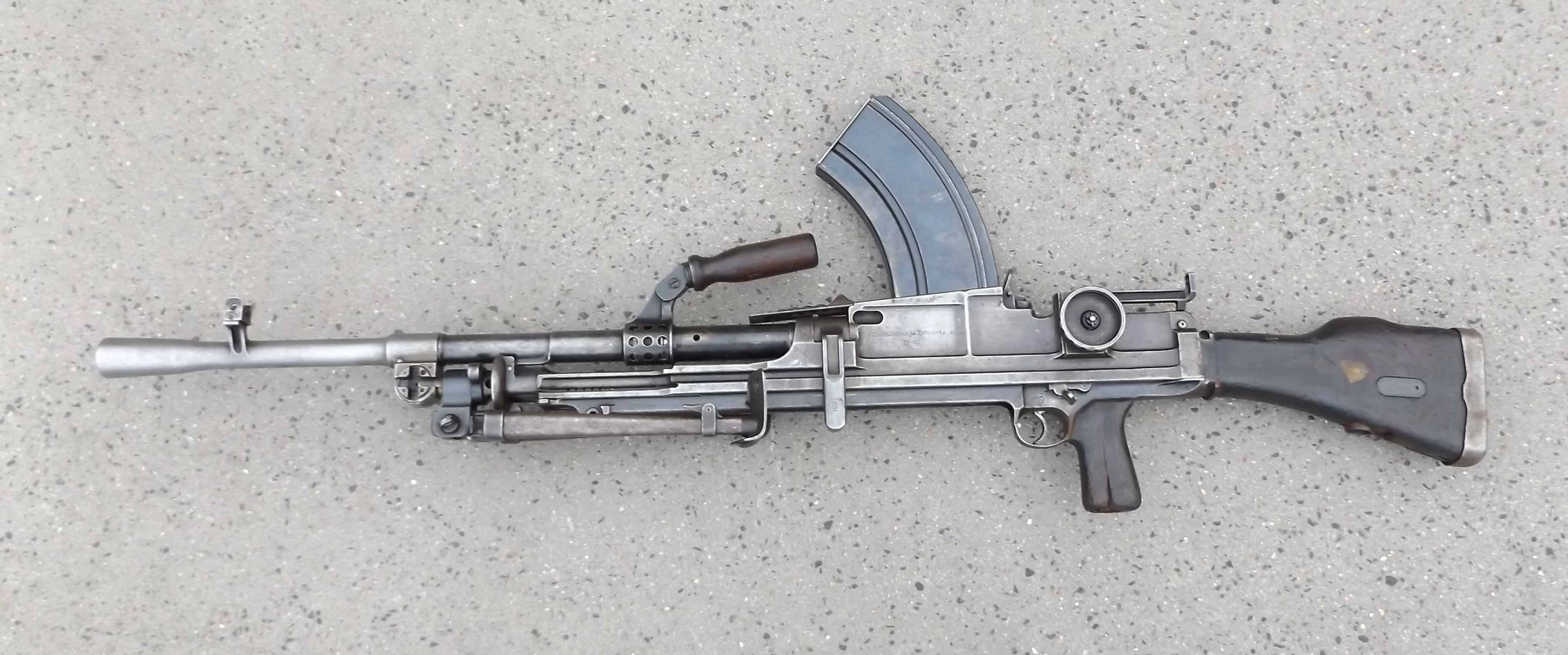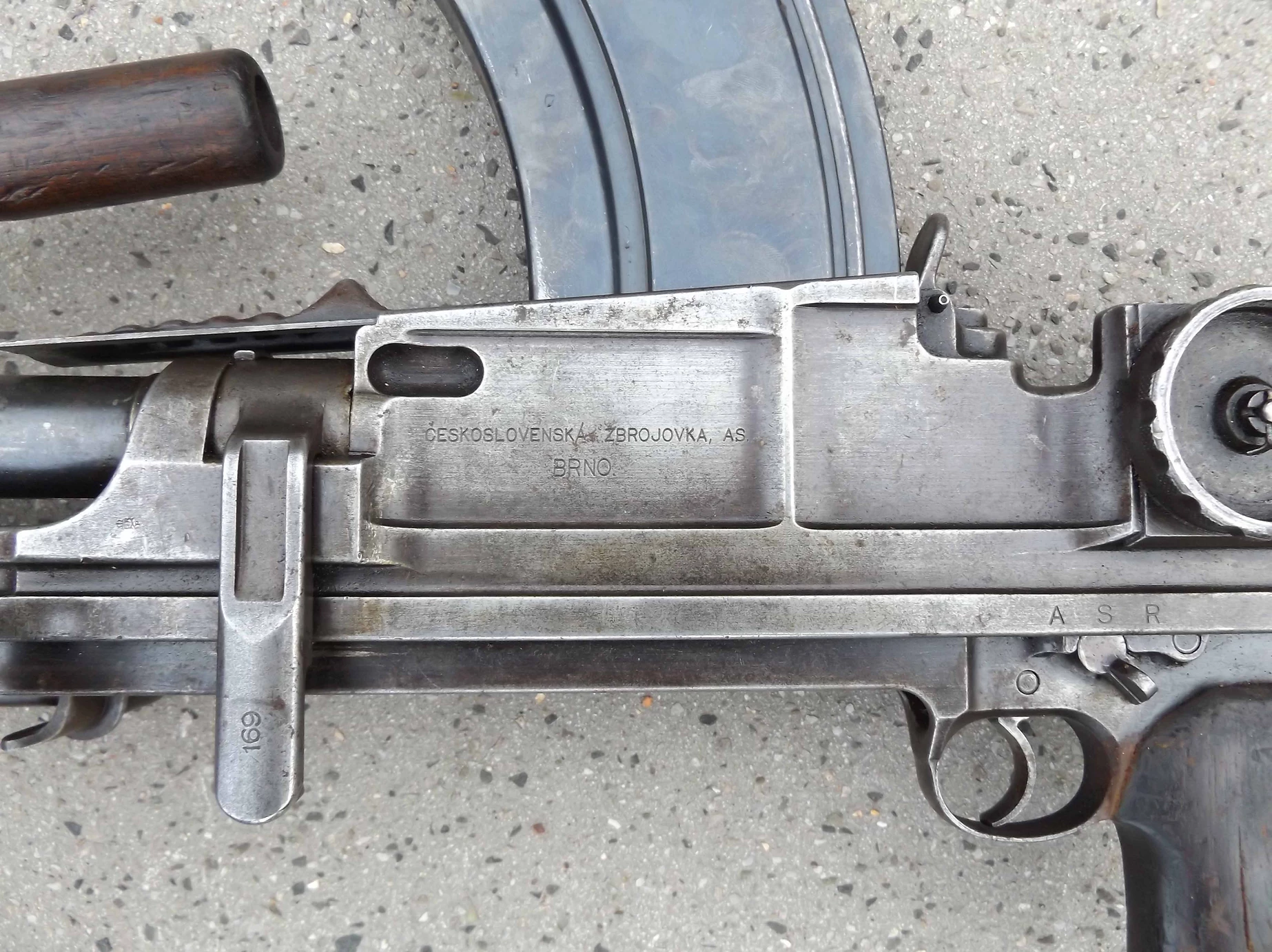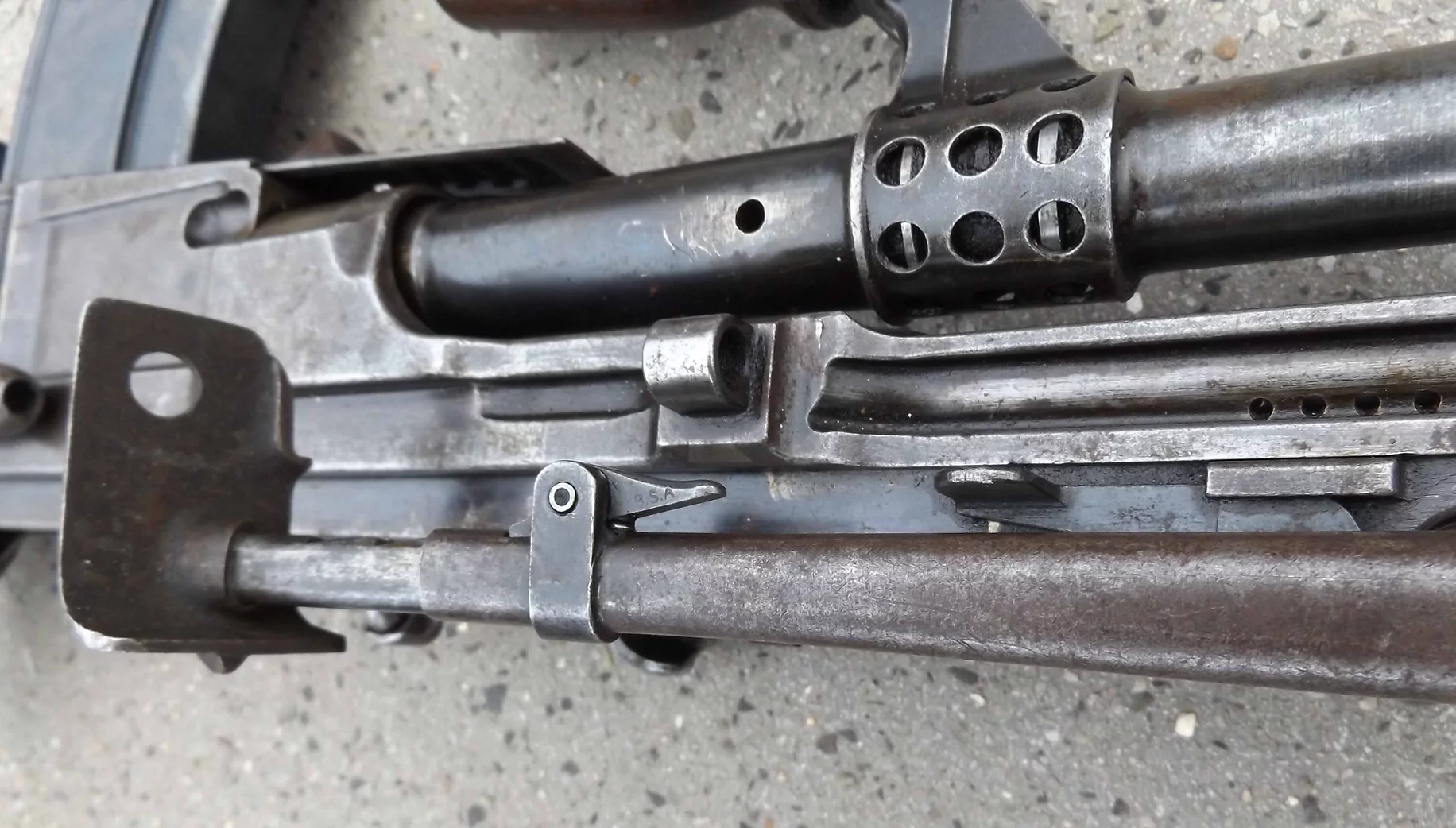This acquisition will further complete our collection on the evolution of the ZB 26 series of LMG through to the development of the Bren and its imitators. British Government 1936 ZGB33 .303 Prototype Bren Gun Used in the 1936 Troop Trials (one of 80) King George V Proof Stamped (pre 1935).
It is not very often that a real piece of British military history turns up and one that paved the way for the Mark I Bren light machine gun.
The 1932 British Government Light Machine gun trials fell within the British Army trials of several light machine guns. Beginning in early 1932, the Vickers–Berthier was in direct competition with the Czechoslovak VZ26 and the Vickers was seen as the favourite.
Unfortunately, the Vickers just missed being selected by the smallest margin, the committee instead selected its rival the Czechoslovak VZ26.
In 1930, the British War Office moved to select a successor to the Lewis gun, which had served as Great Britain’s standard light machine gun since World War I. Although the Lewis gun had performed well, it was difficult to operate and maintain and it lacked a changeable barrel. The War Office considered the Vickers-Berthier Madsen Browning Automatic Rifle French FM 24/29. The Vickers-Berthier was already in service with the British Indian Army and in current production at their Crayford factory in North Kent. The War Office highly favoured the Vickers.
It came highly recommended by British Indian Army Headquarters based in New Delhi, India. The British military attache in Prague, however, reported to the War Office that Czechoslovakia had recently demonstrated a remarkable light machine gun, the ZB26, which prompted the British to pay £135 to acquire a gun and 10,000 rounds of 7.92mm ammunition. This gun was entered into the trials for assessment. The British Army was impressed with the ZB26 and expressed interest as long as the gun could be made to function with the British standard .303in rimmed cartridge.
In 1931, the design team modified a ZB30 gun to use the British .303 ammunition, fed by a distinctive curved magazine. In 1932, Vaclav Holek returned to England with a ZGB32 for trials. This gun’s gas port moved 9.65 inches closer to the chamber to reduce cordite fouling.
Slight modifications resulted in the ZGB33 and ZGB34 models, with a reduction in weight of about 1.0 kg (2.2 lb). In August 1934, the ZGB34 was tested in competition with the Vickers-Berthier and Madsen guns where it proved conclusively to be the superior gun. British authorities arranged with CZ to manufacture the gun under licence at the Royal Small Arms Factory at Enfield Lock. Drawings to British tolerances were prepared by January 1935. After the light machine gun trials, the British Army adopted the now called ZGB33. In late 1934, the Czechoslovak factory was asked to provide 80 light machine guns for British troop trials after further modifications requested by Enfield. These were sent to the Enfield Factory from the Czechoslovak Brno Factory in early 1936.
Unfortunately the 80 modified ZGB33 were not modified at all as requested by the Enfield engineers and turned up at the Enfield factory in there original ZGB33 Troop trial configuration. These were rejected by the Enfield factory and were put into storage were they remained until early 1940. The Czechoslovak factory sent a second batch with the requested modifications (ZGB34) and these look the same as the early Dove Tails Mark 1 Bren guns we know today, aside from the factory stamp.
The first 200 British made Bren guns rolled off the production line at the Enfield Lock Factory, Enfield in January 1938, and formally entered service Aug. 4, 1938.
But what happened to the 80 troop trial ZBG33’s light machine guns stored at the Enfield Factory in 1936? In mid-1939 Britain was at war with Nazi Germany but there was a looming problem, that problem was Southern Ireland.
The big concern of the British War Department was that then neutral Southern Ireland may be helping the Germans, this was not unfounded as German U Boats had been seen unloading goods in Southern Ireland. In a book by the authors Günter Gellmann and Jak Mallmann-Showell (1997) there was a chapter on dropping operations by U-boats for German agents in Eire. The decision was made in 1940 by Churchill to keep the Irish happy, this was to supply 1,000 Bren Guns to the Irish Army (just before Dunkirk), then just a few months later the BEF in France were being overrun by very mobile German Army, the British Army left 28,000 Bren guns on the beaches at Dunkirk.
It is estimated that the Germans recovered 200 tons of scrap metal from Dunkirk alone and this was sent back into German war production. By that time all 80 ZGB33 had been shipped to Southern Ireland as well as 920 other 1937 and 1938 Bren guns. In 1991 the Irish State was clearing out its old stock of .303 Bren guns and 303 rifles supplied by the British years before and hidden in that clear out was this ZGB33.
Please Note: We have kept to the narrative as this is a massive subject ZGB33 Serial number 169 common numbered.
We have the locations of five more of these.




